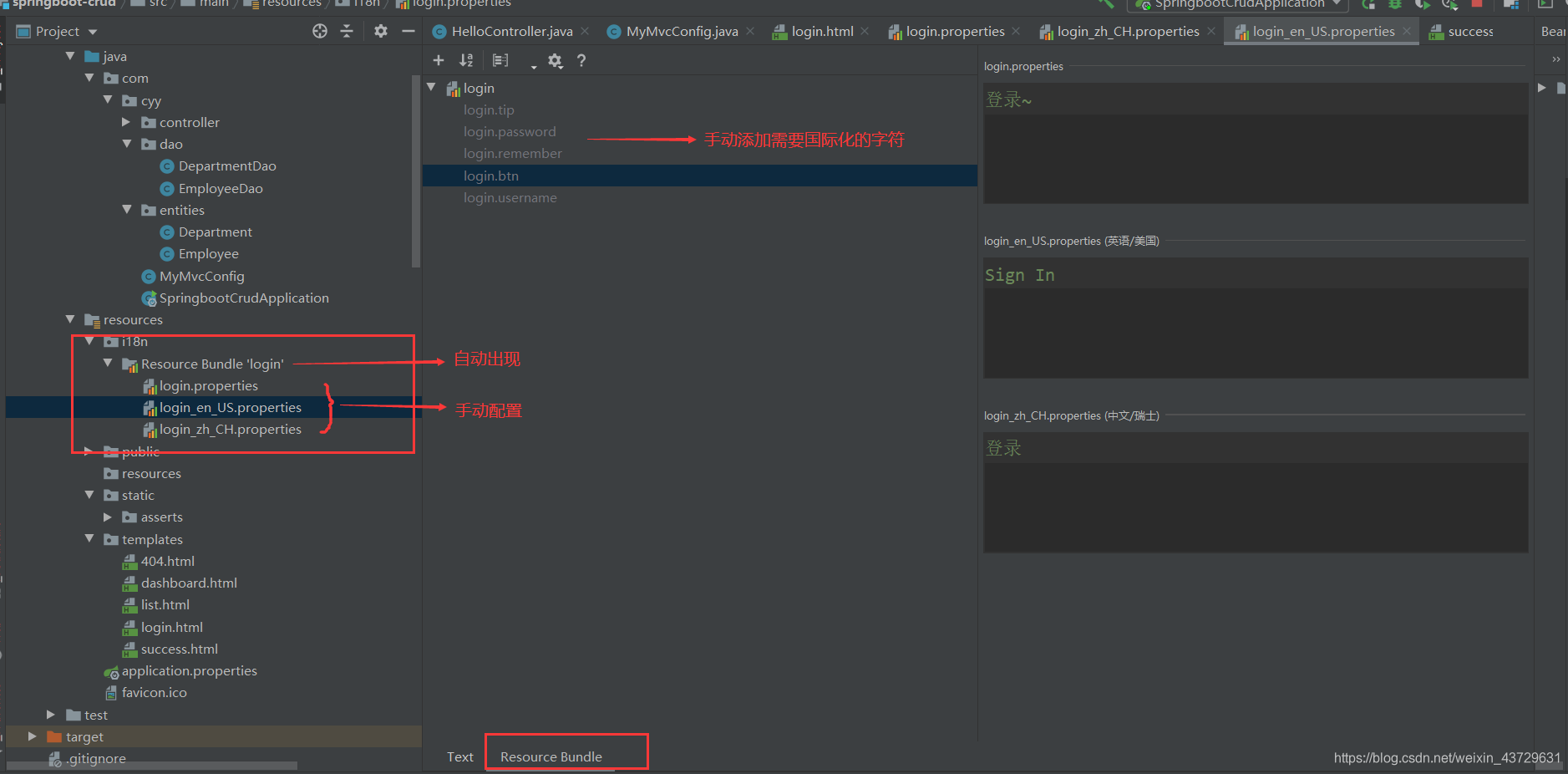默认访问首页的设置方式
方式一 :
controller中
@RequestMapping({"/","/index.html"})
public String index(){
return "index";
}
方式二:
MyMvcConfig中
//所有的WebMvcConfigurerAdapter组件都会一起起作用
@Bean//讲组件注册在容器中
public WebMvcConfigurerAdapter webMvcConfigurerAdapter(){
WebMvcConfigurerAdapter adapter=new WebMvcConfigurerAdapter() {
public void addViewControllers(ViewControllerRegistry registry){
registry.addViewController("/").setViewName("login");
registry.addViewController("/index.html").setViewName("login");
}
};
return adapter;
}
}
静态资源映射

国际化
mvc方式概述:
1.编写国际化配置文件
2.使用ResourceBundleMessageSource管理国际化资源文件
3.在页面使用fmt:message去除国际化内容
步骤:
1.编写国际化配置文件,抽取页面需要的国际化消息


2.SpringBoot自动配置好了管理国际化资源文件的组件
3.去页面取国际化的值
application.properties去配置
spring.messages.basename=国际化文件位置(例:spring.messages.basename=i18n.login)
取值方式:

4.点击链接切换国际化
/*
* 在连接上携带区域信息
* */
public class MyLocaleResolver implements LocaleResolver {
@Override
public Locale resolveLocale(HttpServletRequest request) {
String l= request.getParameter("1");
Locale locale=Locale.getDefault();
if(!StringUtils.isEmpty(1)){
String[] split=l.split("_");
locale=new Locale(split[0],split[1]);
}
return locale;
}
@Override
public void setLocale(HttpServletRequest httpServletRequest, HttpServletResponse httpServletResponse, Locale locale) {
}
@Bean
public LocaleResolver localeResolver(){
return new MyLocaleResolver();
}
